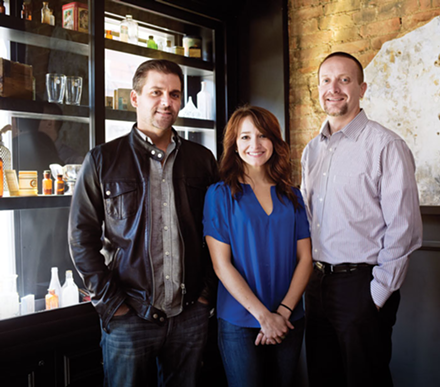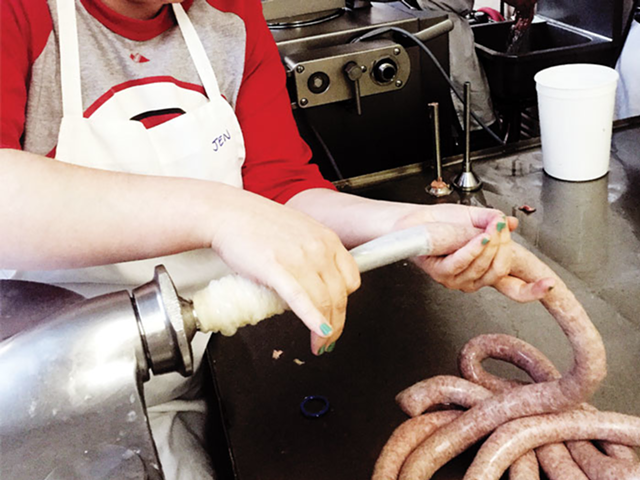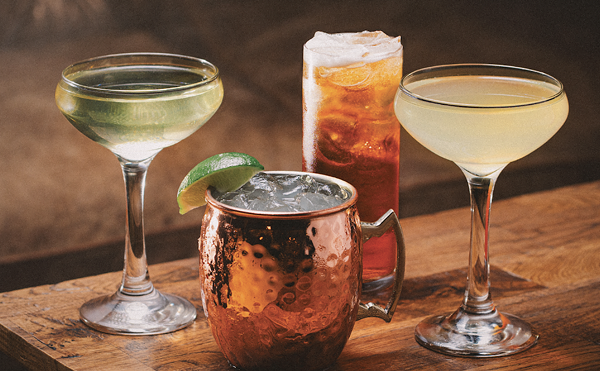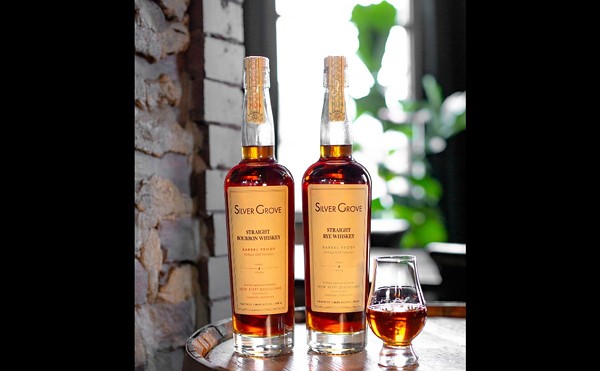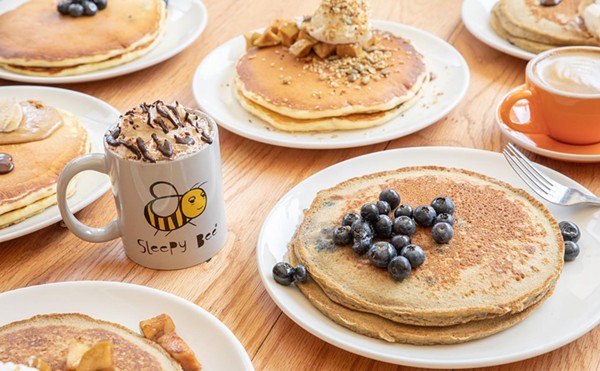You know Cincinnati is becoming more of a destination city when people from larger cities start moving here to open businesses, which is exactly the case with the new apothecary themed Over-the-Rhine cocktail bar Sundry and Vice — “sundry” as in pharmacy and “vice” as in, well, drinking and druggin’.
Two of the three owners moved to Cincinnati from sunny Los Angeles this winter to open up the bar, nestled on the corner of Republic and 13th streets, latent from the hubbub of main drags Vine and Main.
The idea for Sundry and Vice popped into Springfield, Ohio, native and co-owner Stuart King’s head in 2010. He grew up in Springfield, graduated from Ohio State University and then moved to Cincinnati in 1998 to work in the Reds’ sales department. After ditching Cincy to attend law school at the University of San Diego in 2002, and then moving to L.A. in 2007 to work for the Los Angeles Dodgers, King occasionally came back to town for visits. One fateful night in 2010 he found himself wandering around OTR, intrigued by its fledging recovery.
“I walked around for a while and I was amazed, inspired and emotional, because when I lived here I loved OTR,” King says, “and the next day I just came up with this idea.”
At the time, both he and Sundry and Vice’s co-owner/general manager Julia Petiprin were living in downtown L.A. (they hadn’t yet met), which, akin to OTR, was undergoing its own urban revitalization. King kicked around the bar idea for a few years until he met Petiprin at downtown L.A.’s Spring St. Bar, where she was bartending. They scouted some potential spaces to launch their concept there, but it just made sense for them to bring a little bit of the West Coast to Cincy.
“Downtown, there was such a sense of community and everybody was friends with everyone,” Petiprin says about L.A. “I feel OTR is very much like that. This is like New Orleans undiscovered.
“There’s something about Cincinnati that gets inside of you,” King continues. “It’s the character. It’s the history. It’s the people. It’s hard to shake.”
>To round out the team, Petiprin and King hooked up with King’s former Reds co-worker and Cincinnati native Ryan Rizzo. The three consulted with Brandon Tepper, an acclaimed L.A. mixologist who specializes in California fresh fare, aka light and drinkable cocktails, to create Sundry and Vice’s cocktail list. The list features six house and four signature cocktails, including the Bloom of Youth (gin, sweet vermouth, lemon, strawberry, cucumber, soda), King’s Remedy (rye whiskey, aged rum, crème de cacao, demerara sugar) and on-draft classics like an Old Fashioned and Vieux Carre, a vintage New Orleans cocktail made with rye whiskey, cognac, sweet vermouth, bitters and Bénédictine liqueur.
They also have 10 beers on draft, wine, and if you just want a Jack and Coke, they can make that, too. They plan on adding phosphates, housemade sodas and boozy floats, an ode to the halcyon days of pharmacies and apothecaries. Petiprin, who studied interior design in L.A., designed Sundry and Vice. The words “remedy” and “elixir” are etched on the exterior transom windows, exuding a clandestine speakeasy vibe. But inside, dark walls, a few booths, vintage soda bottles and a candy jar filled with Smarties and Tootsie Rolls feels more like a neighborhood tavern rather than a pretentious cocktail lounge.
“We were going to go with a little bit darker speakeasy feel, but we decided to brighten it up as a result with all of the activities at Washington Park,” King says. “At night, there’s no such thing as too dark in here. It’s just so beautiful and sexy and the storefront just pops.”
The storefront King speaks of is comprised of antique tchotchkes they found — amber glass medicine bottles, vintage pharmacy signs and tonics, like a half-full bottle of 35-percent alcohol rheumatic and gout compound. Back in the day, apothecaries practiced what today we would consider questionable techniques, writing prescriptions for things now illegal, but they did help invent the cocktail.
As King explains, bitters were used as medicines and digestive aids, and because they tasted nasty, they were put in alcoholic drinks and sodas to go down easier. The back wall also pays homage to those bygone practices with old prescriptions for cocaine and opium plastered as wallpaper.
“Every little thing has its story behind it,” King says. “We don’t know what the exact story is, but I think consciously or subconsciously you want to devise a story in your head and there’s something satisfying about it.”
Sundry and Vice, 18 W. 13th St., Over-the-Rhine, 513-721-8423, sundryandvice.com.

